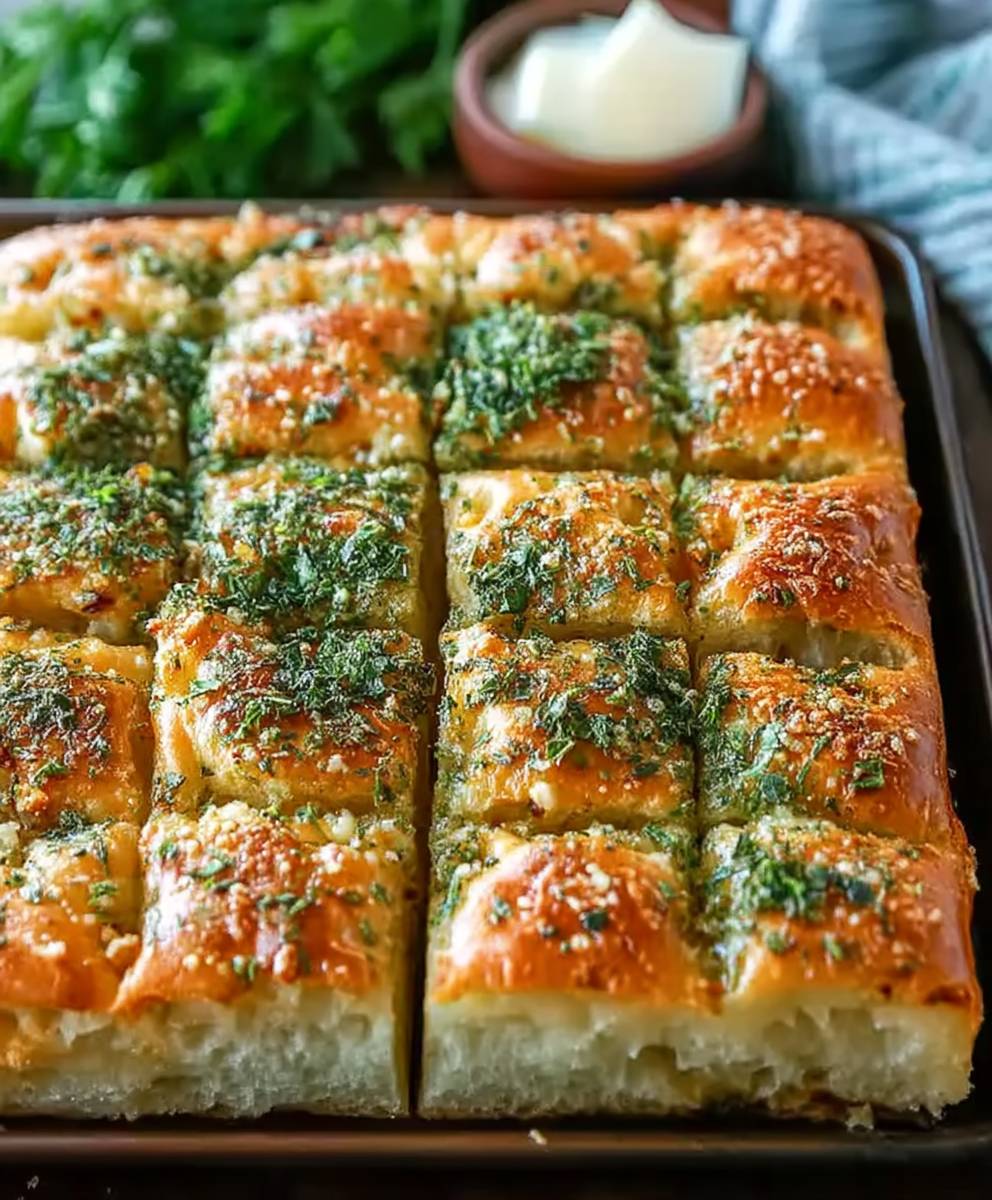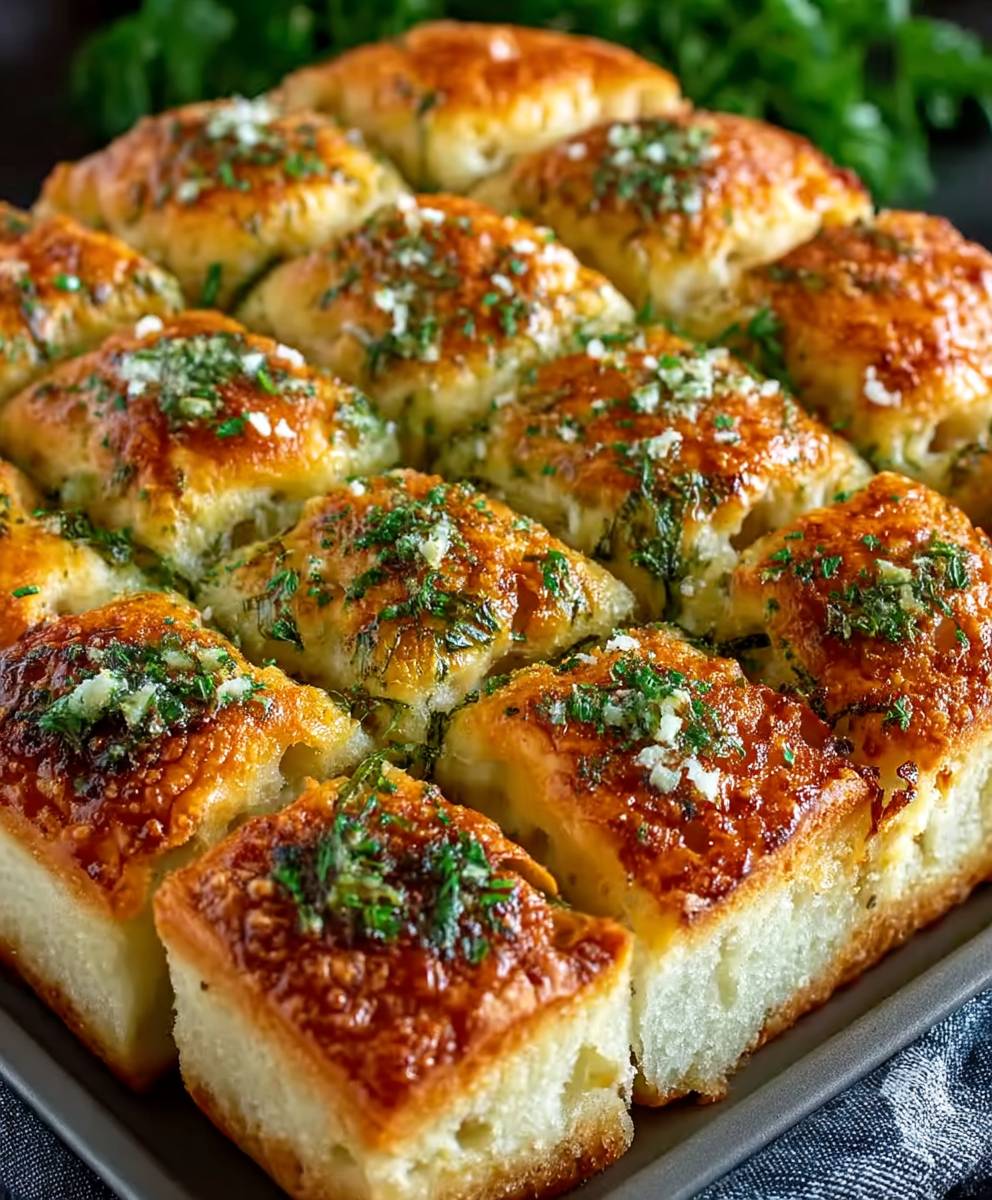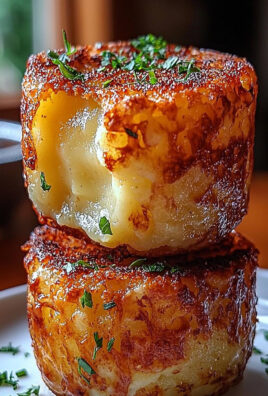Garlic Parmesan Focaccia: Prepare to be transported to a sun-drenched Italian bakery with every single bite! Imagine sinking your teeth into a cloud-like bread, infused with the pungent aroma of garlic and the salty, nutty tang of Parmesan cheese. This isn’t just bread; it’s an experience, a symphony of flavors and textures that will have you reaching for slice after slice.
Focaccia, with its humble origins in ancient Italy, has long been a staple of Mediterranean cuisine. Traditionally, it was a simple flatbread, often baked on the hearth and seasoned with olive oil and herbs. Over time, regional variations emerged, each reflecting the unique ingredients and culinary traditions of its locale. Our Garlic Parmesan Focaccia is a modern twist on this classic, elevating it to new heights of deliciousness.
What makes this focaccia so irresistible? It’s the perfect combination of a soft, airy interior and a crisp, golden-brown crust. The garlic and Parmesan create a savory explosion that tantalizes the taste buds, while the generous drizzle of olive oil adds richness and moisture. It’s incredibly versatile, too! Enjoy it as a satisfying snack, a delightful appetizer, or a flavorful accompaniment to your favorite soups and salads. Trust me, once you try this Garlic Parmesan Focaccia, you’ll never look at bread the same way again!
Ingredients:
- For the Dough:
- 500g (about 4 cups) bread flour, plus more for dusting
- 10g (2 teaspoons) instant dry yeast
- 10g (2 teaspoons) granulated sugar
- 15g (2 1/2 teaspoons) kosher salt
- 400ml (1 3/4 cups) lukewarm water (about 105-115°F)
- 60ml (1/4 cup) olive oil, plus more for drizzling
- For the Garlic Parmesan Topping:
- 60ml (1/4 cup) olive oil
- 6-8 cloves garlic, minced
- 100g (about 1 cup) grated Parmesan cheese, finely grated
- 2 tablespoons chopped fresh rosemary (optional, but highly recommended!)
- 1 teaspoon dried oregano
- 1/2 teaspoon red pepper flakes (optional, for a little kick)
- Sea salt flakes, for sprinkling
- Freshly ground black pepper, to taste
Preparing the Dough:
- Combine Dry Ingredients: In a large bowl, whisk together the bread flour, instant dry yeast, sugar, and salt. Make sure the yeast and salt don’t directly touch each other, as the salt can inhibit the yeast’s activity. I like to add the yeast to one side of the bowl and the salt to the other before whisking everything together.
- Add Wet Ingredients: Pour in the lukewarm water and olive oil. Using a wooden spoon or your hands, mix until a shaggy dough forms. It will be quite sticky, and that’s perfectly fine! Don’t be tempted to add more flour at this stage.
- First Rise (Bulk Fermentation): Cover the bowl with plastic wrap or a damp kitchen towel. Let the dough rise in a warm place for 1-1.5 hours, or until it has doubled in size. This process is called bulk fermentation, and it’s crucial for developing the flavor and texture of the focaccia. The warmer the environment, the faster it will rise. I often place mine in a slightly warmed oven (turned off, of course!).
- Stretch and Fold (Optional, but Recommended): After the first hour, perform a series of stretch and folds. This helps to strengthen the gluten structure and create a more airy crumb. To do this, gently grab one side of the dough, stretch it upwards, and fold it over onto itself. Rotate the bowl 90 degrees and repeat. Do this 4-5 times around the bowl. Cover the bowl again and let it rise for another 30 minutes.
Preparing the Garlic Parmesan Topping:
- Infuse the Oil: While the dough is rising, prepare the garlic Parmesan topping. In a small saucepan, heat the olive oil over medium-low heat. Add the minced garlic and cook for 2-3 minutes, or until fragrant and lightly golden. Be careful not to burn the garlic, as it will become bitter. Remove the saucepan from the heat and let the garlic-infused oil cool slightly.
- Combine Topping Ingredients: In a small bowl, combine the cooled garlic-infused oil, grated Parmesan cheese, chopped fresh rosemary (if using), dried oregano, and red pepper flakes (if using). Season with freshly ground black pepper to taste. Mix well to combine.
Shaping and Second Rise:
- Prepare the Baking Sheet: Generously grease a 9×13 inch baking sheet with olive oil. You can also line it with parchment paper for easier cleanup, but the olive oil is essential for creating a crispy bottom crust.
- Transfer the Dough: Gently transfer the dough to the prepared baking sheet. It will be sticky, so use oiled hands or a dough scraper to help you.
- Stretch and Dimple: Gently stretch the dough to fill the baking sheet. Don’t worry if it doesn’t reach all the corners; it will spread out during the second rise. Now, the fun part: dimpling! Use your fingertips to create deep dimples all over the surface of the dough. These dimples will hold the garlic Parmesan topping and create those characteristic focaccia pockets.
- Second Rise (Proofing): Cover the baking sheet with plastic wrap or a damp kitchen towel. Let the dough rise for another 30-45 minutes, or until it is puffy and the dimples are well-defined. This second rise is crucial for creating a light and airy focaccia.
Baking the Focaccia:
- Preheat the Oven: Preheat your oven to 425°F (220°C). Make sure your oven is properly preheated before baking the focaccia, as this will ensure even cooking and a crispy crust.
- Add the Topping: Drizzle the garlic Parmesan topping evenly over the dimpled dough, making sure to get some of the topping into each dimple. Sprinkle generously with sea salt flakes.
- Bake: Bake for 20-25 minutes, or until the focaccia is golden brown and the bottom is crispy. Keep an eye on it during the last few minutes of baking to prevent it from burning. If the top is browning too quickly, you can loosely tent it with aluminum foil.
- Cool and Serve: Remove the focaccia from the oven and let it cool on the baking sheet for a few minutes before transferring it to a wire rack to cool completely. Slice into squares and serve warm or at room temperature. This focaccia is delicious on its own, or it can be used for sandwiches, appetizers, or as a side dish.
Tips and Variations:
- Use High-Quality Ingredients: The quality of your ingredients will directly impact the flavor of your focaccia. Use good quality bread flour, olive oil, and Parmesan cheese for the best results.
- Don’t Overwork the Dough: Overworking the dough can result in a tough focaccia. Mix the dough until just combined, and rely on the stretch and folds to develop the gluten structure.
- Adjust the Garlic: If you’re not a huge fan of garlic, you can reduce the amount in the topping. Conversely, if you love garlic, feel free to add even more!
- Add Other Toppings: Get creative with your toppings! You can add other herbs, such as thyme or oregano, or vegetables, such as sliced tomatoes, olives, or roasted red peppers.
- Make it Ahead: The dough can be made ahead of time and stored in the refrigerator for up to 24 hours. Just bring it to room temperature before shaping and baking.
- Freezing: Baked focaccia can be frozen for up to 2 months. Wrap it tightly in plastic wrap and then in aluminum foil. Thaw at room temperature before serving. You can also reheat it in a low oven to crisp it up.
- Experiment with Flours: While bread flour is recommended for its high gluten content, you can experiment with other flours, such as all-purpose flour or whole wheat flour. Keep in mind that using different flours will affect the texture and flavor of the focaccia.
- Salt is Key: Don’t skimp on the salt! Salt is essential for flavor and for controlling the yeast activity. Use kosher salt in the dough and sea salt flakes for sprinkling on top.
- Water Temperature: The water should be lukewarm, about 105-115°F (40-46°C). If the water is too hot, it can kill the yeast. If it’s too cold, the yeast won’t activate properly.
- Yeast Type: I prefer to use instant dry yeast because it doesn’t require proofing. However, you can also use active dry yeast. If using active dry yeast, you’ll need to proof it in warm water with a pinch of sugar for 5-10 minutes before adding it to the flour.
Troubleshooting:
- Focaccia is too dense: This could be due to several factors, such as using old yeast, not letting the dough rise long enough, or overworking the dough. Make sure your yeast is fresh, give the dough plenty of time to rise, and avoid overmixing.
- Focaccia is too dry: This could be due to overbaking or using too much flour. Reduce the baking time and be careful not to add too much flour to the dough.
- Focaccia is not browning: This could be due to the oven temperature being too low. Make sure your oven is properly preheated and that the temperature is accurate.
- Garlic
Conclusion:
This Garlic Parmesan Focaccia recipe isn’t just another bread recipe; it’s an experience. From the satisfying dimpling of the dough to the intoxicating aroma that fills your kitchen as it bakes, every step is a joy. But the real magic happens when you take that first bite. The crisp, golden crust gives way to a soft, airy interior, infused with the savory goodness of garlic and the salty, nutty tang of Parmesan. It’s a flavor explosion that will have you reaching for slice after slice.
I truly believe this focaccia is a must-try for anyone who loves good bread, simple ingredients, and incredible flavor. It’s surprisingly easy to make, even for beginner bakers, and the results are guaranteed to impress. Forget store-bought bread; once you’ve tasted homemade focaccia, you’ll never go back!
But the best part about this recipe is its versatility. While the garlic and Parmesan combination is a classic for a reason, feel free to get creative and experiment with different toppings.
Serving Suggestions and Variations:
* As a Sandwich Bread: Slice the focaccia horizontally and use it to create delicious sandwiches. Think Italian meats, roasted vegetables, or even a simple Caprese with fresh mozzarella, tomatoes, and basil.
* As an Appetizer: Cut the focaccia into squares or strips and serve it with a selection of dips, such as hummus, olive tapenade, or a creamy artichoke dip.
* As a Side Dish: Serve warm slices of focaccia alongside your favorite pasta dishes, soups, or salads. It’s perfect for soaking up all those delicious sauces and dressings.
* Herb Variations: Experiment with different herbs, such as rosemary, thyme, or oregano, to create unique flavor profiles. Simply sprinkle the herbs over the dough along with the garlic and Parmesan before baking.
* Cheese Variations: Try using different types of cheese, such as Asiago, Pecorino Romano, or even a blend of Italian cheeses.
* Vegetable Additions: Add sliced olives, sun-dried tomatoes, or roasted red peppers to the dough for extra flavor and texture.
* Sweet Focaccia: For a sweet treat, omit the garlic and Parmesan and sprinkle the dough with sugar, cinnamon, and chopped nuts before baking. Drizzle with honey after baking for an extra touch of sweetness.I’m so excited for you to try this recipe and experience the joy of baking your own Garlic Parmesan Focaccia. It’s a recipe that’s sure to become a family favorite, and I can’t wait to hear what you think.
So, preheat your oven, gather your ingredients, and get ready to bake! Don’t be afraid to get your hands dirty and have some fun in the kitchen. And most importantly, don’t forget to share your creations with me! I’d love to see your photos and hear about your experiences. Tag me on social media and let me know what variations you tried and how they turned out. Happy baking! I am confident that you will love this recipe.
Garlic Parmesan Focaccia: The Ultimate Recipe and Baking Guide
Fluffy focaccia topped with garlic-infused olive oil, Parmesan, and rosemary. Perfect as an appetizer, side, or sandwich bread.
By: AvaCategory: AppetizerDifficulty: EasyCuisine: AmericanYield: 12-16 servingsDietary: VegetarianIngredients
Instructions
Recipe Notes
- Use high-quality ingredients for the best flavor.
- Don’t overwork the dough.
- Adjust the garlic to your preference.
- Get creative with toppings! Try adding other herbs, vegetables, or cheeses.
- The dough can be made ahead and stored in the refrigerator for up to 24 hours.
- Baked focaccia can be frozen for up to 2 months.
- Experiment with different flours.
- Don’t skimp on the salt!
- The water should be lukewarm, about 105-115°F (40-46°C).
- Instant dry yeast is recommended, but active dry yeast can be used (proof first).
Frequently Asked Questions
→ How do I ensure the bread stays moist?Use fresh, ripe ingredients and avoid overmixing the batter. Store in an airtight container.→ Can I substitute ingredients?Yes, you can substitute similar ingredients while maintaining the basic ratios for best results.→ How long does this bread keep?Store tightly wrapped at room temperature for 2-3 days, or refrigerate for up to a week.→ What if I don't have all the spices?You can adjust spices to taste or substitute with similar warming spices.→ Can I freeze this bread?Yes, wrap individual slices and freeze for up to 3 months. Thaw at room temperature before serving.







Leave a Comment